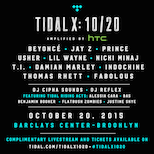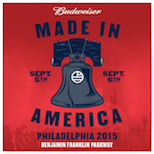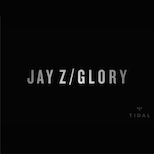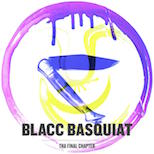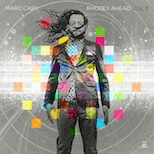Next Collective Puts A Jazz Spin on Pop Songs
02.19.2013
MUSIC
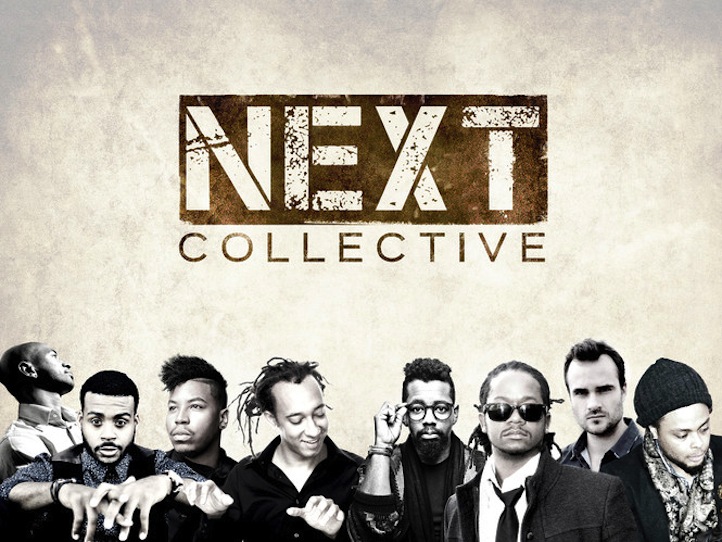
We’ve entered a new era in jazz. As the genre’s younger artists come up exposed to hip-hop, indie rock, soul, electronica and more, they bring all of those with them as they approach one of America’s first original art forms. No where is this more clear than on Cover Art by NEXT Collective, a collection of eight of jazz’s finest rising stars. Meant to showcase Concord Music Group’s solid core of young talent – saxophonists Logan Richardson and Walter Smith III, guitarist Matthew Stevens, keyboardists Gerald Clayton and Kris Bowers, bassist Ben Williams, drummer Jamire Williams, and special guest trumpeter Christian Scott (aka Christian aTunde Adjuah) – Cover Art finds NEXT Collective, “exploring their own interpretations of songs by such contemporary artists as Bon Iver, Drake, N.E.R.D., Little Dragon and more.” There’s D’Angelo, JAY Z, Missy Elliott and Pearl Jam covers, as well.
“It’s the kind of project where if you know the tunes, it takes you to a whole ‘nother level – at least I hope it does – but if you don’t know the tunes and you’re just a jazz fan, there’s great melodies, they’re great tunes in general so you’ll like them either way,” said Concord Music A&R Chris Dunn, who also produced the album.
Life+Times spoke with Dunn and Ben Williams to get some more insight on Cover Art and jazz today.
Life+Times: Expand on how all of these people came together, and the chemistry that was developed.
Chris Dunn: It kind of came about because we [Concord Music Group] were starting our next wave of our youth movement and it was a company-wide discussion on, “What’s the best way to break them all out as opposed to just doing three individual solo projects.” Someone suggested – “Why don’t you make a band?” I said, “Oh, that’s interesting,” I was always discussing this with the cats – the original first three cats were Walter Smith III, Matthew Stevens and Logan Richardson. During our discussions, they were really open. I wasn’t as open-minded because there’s been those records in the past where you get a group of talented musicians getting together to play and sometimes it doesn’t always jive. And with these artists, they’re all really good writers as well as arrangers, so I thought it would have been kind of hard to make a record showcasing their writing but really kind of playing in a band where you really couldn’t get the sounds you want. We kept discussing and discussing and finally the one common thread between everyone we were talking about [earlier] – even the other members of the roster – was the popular music of the day. You know, “I got a cool cover of this, I got a cool cover of that”. It was Logan and I, and one night I was just like, “Yo, why don’t we just do a covers album and let’s put a cap on the years. Let’s do your generation of music.” The stuff that appeals to you all. For me, nothing can compare to the music I listened when I was in high school. For them, I wanted that same kind of feeling. We discussed it, decided that was the way to go. By the time figured all this out, we decided to take advantage of friends and family, other labelmates, so we got Ben [Williams], who had already made a record on the label; Jamire [Williams] is family because he’s on so many records of ours and a big fan; the three that I mentioned were already a part of it; at the time we were discussing this, I was just starting to have a dialogue with Gerald Clayton about coming to the label so he seemed like a natural fit; and Kris Bowers had just won the Thelonious Monk competition. I was like, “This sounds to me like a group because a majority of them are friends.” Once we got everyone together it was magic because everyone had a connection and was so in tune to one another. There was an instant vibe when everyone got together because most of them had played with each other. It was actually amazing to watch them.
Ben Williams: There was a link between all of us. Most of us had already been in a band together, did some work together or recorded together. Me and the drummer Jamire Williams, we play a band together. He started a band and he’s played in my band. Gerald Clayton, same thing. Christian Scott, he recorded on my last album. Jamire and Matt Stevens, the guitarist, play in his band. So, there’s all these links in the group already. [It was] the first time this entire group has been assembled like this, but we all knew each other, we’re all really good friends.
L+T: How did you decide which records you wanted to cover?
CD: Well, actually, it might have been one of the first clever moments I had [laughs], because I just decided to not say anything as far as music goes, I didn’t want to tie anyone’s hands. So I said, “Let’s do this: everyone come back with five tunes that you love or think could be really cool, and then we’ll whittle it down from there. To give the record some balance, why don’t we have one tune with everybody in mind, and one tune with whatever works best for that particular arrangement.” That’s kind of how we whittled it down. One of the things that we did discuss was we didn’t want to do all hits. It was kind of reversed. The few hits that we do have were exceptions, but for the most part we didn’t want to do hits because we thought that had the potential to get corny. So looking at everyone’s top five, figuring out how many tunes we wanted from each other, looking at the YouTube counts, it all just kind of fell naturally. It was like I knew all that information on my side, but their side I was just letting them go back on forth on what was hot or not and it just ended up what it was. It was very organic.
LT: Why did you decide to arrange N.E.R.D.’s “Fly Or Die”? What was your favorite song to record?
BW: I’ve always been a fan of N.E.R.D. and everything that Pharrell’s done as a producer. In the pop world, he’s always pushed the envelop, he’s always made really interesting and progressive music, and the group N.E.R.D. was really like an extension of that. That group was that outlet for him to be really experimental with stuff that maybe he couldn’t do with some of the artists that he normally works with. I was flipping through my iTunes and brainstorming seeing if something would pop out at me, and I remember playing some songs on my iPod and that song [“Fly Or Die”] came on and I just started hearing the arrangement and how I would flip it. So I just took the idea from one little piece of the song and expanded it. Everybody’s arrangements were dope. What everybody did with how they flipped the song, everybody’s concept was really cool. I really enjoyed playing “No Church In The Wild,” the JAY Z and Kanye tune, just because that’s a really dope bass line that’s already in the song. Playing that was really hypnotizing, you know.
L+T: There seems to be a lot of jazz cats who are moving into or incorporating jazz, hip-hop, R&B with Christian Scott and others. There’s really a wave of folks that are really not limiting themselves to a genre.
CD: It’s funny that you say that – and this is another example of the organic-ness – because Chris [Scott] were working on his album, his current album [Christian aTunde Adjuah] at the time and I was playing him the demos for this group. He got really excited and was like, “Hey, I’d love to be a part of this, can I be down?” I was like, “Oh man, that would be awesome, let’s do it. Pick a couple of tunes.” So he had actually picked two really dope indie rock tunes, that were totally killing and I was totally into it. Because of his schedule and the makeup of the bad, he was like, “I should probably incorporate some tunes that are more feel, less complicated on the arrangements.” He says, “Ok, I wanna do JAY Z and Kanye West ‘No Church In The Wild’ and I wanna do Drake’s ‘Marvin’s Room.’ I was like, “Wow,” because that’s the one side that we almost neglected was actually the hip-hop and R&B side. When he did that, everything really came together. When Christian’s in his mode, playing tunes that he’s super-feeling or covers – which he doesn’t do too often – it’s a really special thing. The “No Church In The Wild,” to me, sounds like some VSOP, Miles Davis stuff playing a JAY Z and Kanye tune. It’s kinda crazy.
L+T: Doing an album of cover records, and trying to introduce these artists via them, who is you all’s intended audience?
CD: I definitely think, for me growing being a hardcore jazz fan, I [also] grew up with the birth of hip-hop, and was always a heavy R&B [fan], and classic rock was the thing when I was a kid too. I was a music junkie, so growing up as a kid I would feel like the weird-kid-out. Here I am listening to hip-hop, but then friends come over and I might be listening to jazz. The thing with this group is they’re so spread out musically – they listen to everything – we wanted to really incorporate those groups, so for those who think jazz has to be one certain thing, this shows you that it’s not what you think it is. It can be whatever you want to make of it. I think the hip-hop tunes remain retain that hip-hop feel even though it’s done in a jazz way. Same thing with the indie tunes. We’ve got plenty of electric guitar rolling and Jamire is laying down that groove so hard. Each song maintains certain feelings from the genre that they’re actually from that can connect to all those different audiences. There’s that familiarity. One of the things that’s difficult for people who are not acquainted to jazz music, it’s hard for them to grasp it when there’s no familiarity. Sometimes there can be a great original tune, but if you don’t know that tune, it doesn’t grab you right away, it’s hard for you to engage. Whereas a cover, if you’re listening, you’re like, “Damn, is that D’Angelo’s ‘Africa?’ I love that song.” Now all of a sudden, you’re engaged. With the covers, I think that’s where it helps because if you’re of these bands in general or those musical styles, you’re going to get a kick out of this record. The one thing that we made didn’t happen is none of it’s corny. Even from the most heavy tunes like “Come Smoke My Herb” or “Twice” or Christian on “No Church In The Wild”, it’s still very true. The playing is just ridiculous. Then you get tunes like “Marvin’s Room” or “Africa” or “Perth”, and even those may have a more R&B or poppy feel if you listen to the cats playing, it’s bar-none, these cats are laying it down.
L+T: How do jazz artists approach music different than jazz artists before them approached music given that they’re hip-hop generation, incorporating that, indie rock, etc. Into their music?
CD: Well only speaking as an observer, from what I see – and I’ve been around jazz music a lot, even some of the legendary cats because I used to be a jazz DJ back in the day – one thing I notice with this generation, especially with these cats, is that they know the tradition. And if you heard them play the tradition you’d be like, “These cats can play,” but then to the other end, these cats also have no boundaries as far as music goes. Whatever they like, if they can do it, they’ll play it. They don’t feel any kind of constraints. With the legends, they were inventing the game. I think what happened in between inventing the game and today, cats are just putting their own spin on it. I wouldn’t necessarily say reinventing anything, I think they were upholding the tradition. If they wanted to not uphold the tradition and be more of their time, I think it was difficult for them to do and it wasn’t welcome. Whereas now, these cats don’t know any better, it’s totally welcome. It would be kind of weird if you didn’t incorporate it because it’s just as much a part of their DNA.
BW: It goes along with the whole tradition of what’s always happened with music, what jazz artists have always done with the music, addressing the music of their time period. As jazz artists, we always flip things to our perspective. The same way that John Coltrane, for instance, took “My Favorite Things.” He played in a way that was totally his and it became one of his signature songs, he really flipped it and made it his own sound put into it. Essentially, we’re doing the same thing with the music that we’re growing up with and listening to with hip-hop and indie rock. We live in this era where there’s so much music that’s accessible to us. You can just go on your computer, you don’t even have to leave your house. You can walk around with your entire music library, a whole room of records just sit in the palm of your hand now. I think it’s really expanding all of our tastes. We’re all into different kinds of music and all the guys in the band, we have a lot of common things we grew up with, but everybody’s into their own individual thing, too. We kind of share and bring that to the table.
L+T: Will there be more records from the collective after this?
CD: The new members to the fold will roll out their solo records out of this. Gerald already has a record coming out in April. But the idea was to introduce everybody and re-introduce those that are more well known with Christian being a special guest to tie it all together. Everybody had such a good time, it was incredible. I have the pleasure of talking to these cats all the time and seeing them in different groups. It was really kind of breathtaking to see them all in the room at the same time. When we first got there, it was one bad cat coming in after another, it was ridiculous. I think everybody had a really good time and I could definitely see some more projects in the future for sure, covers and maybe some other things down the line. There is something about this covers thing that’s pretty interesting that I think should continue.
Cover Art drops February 26th.
